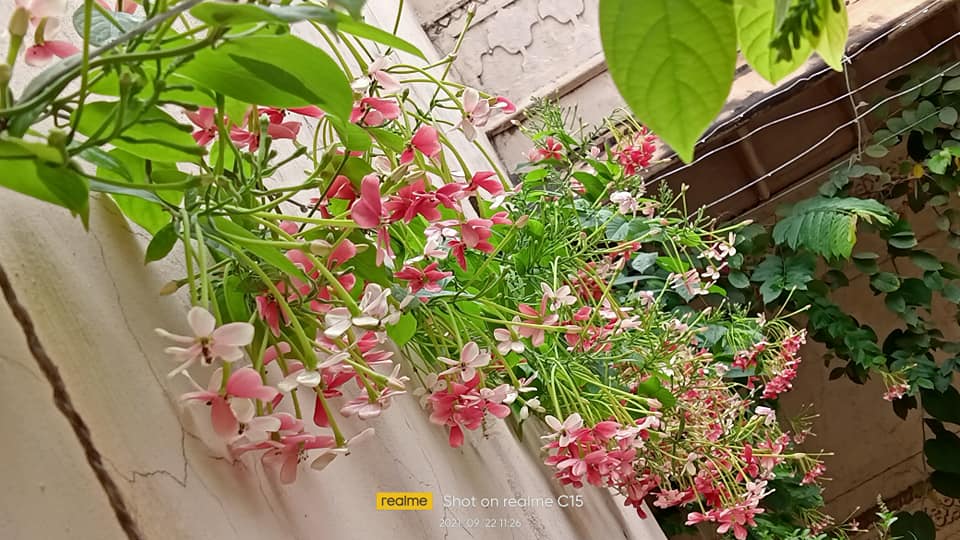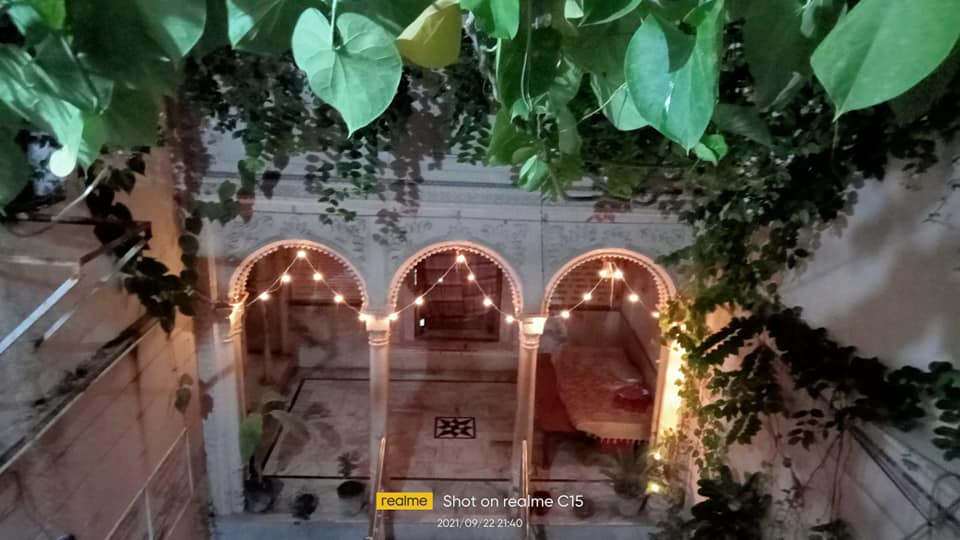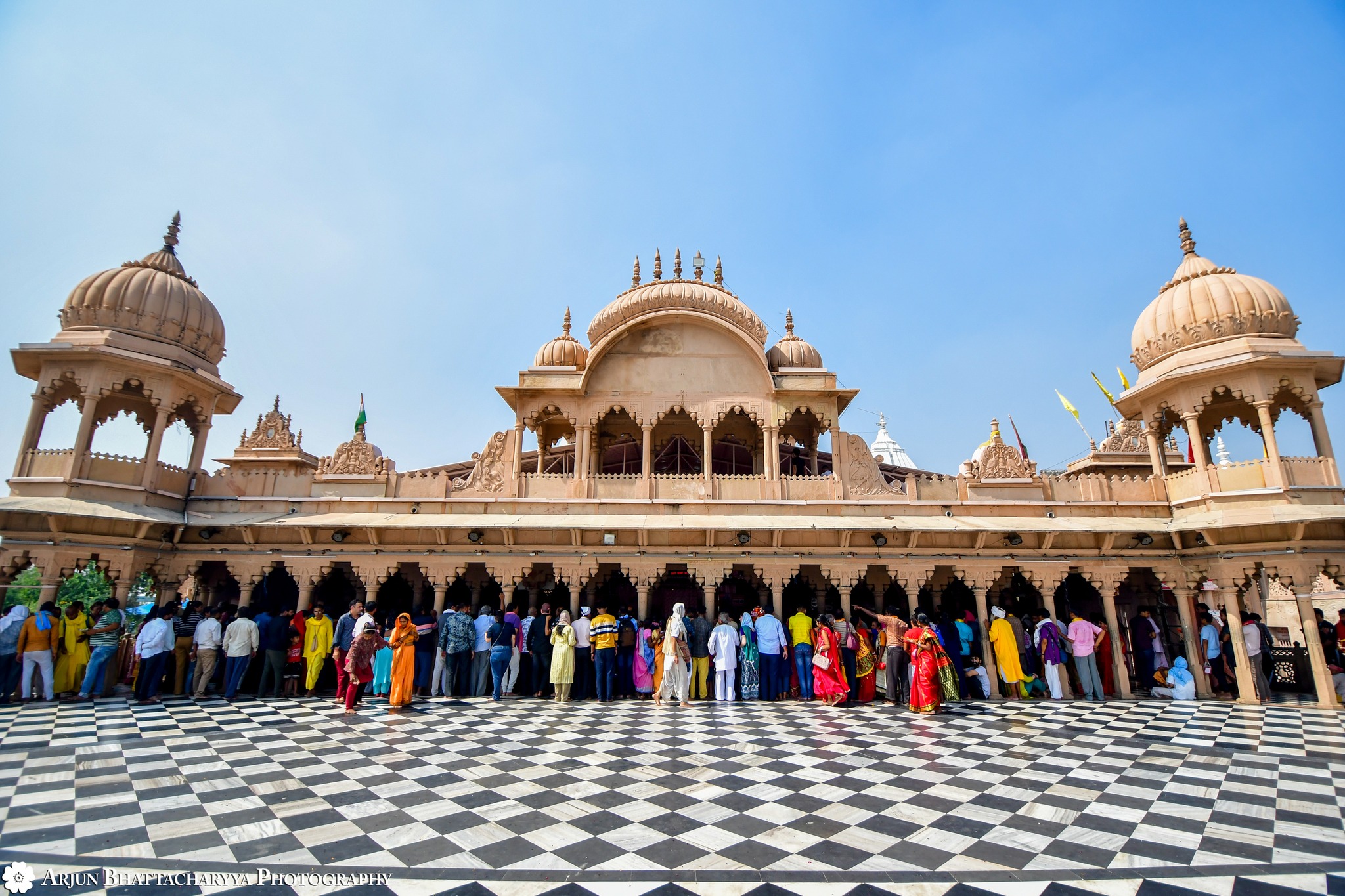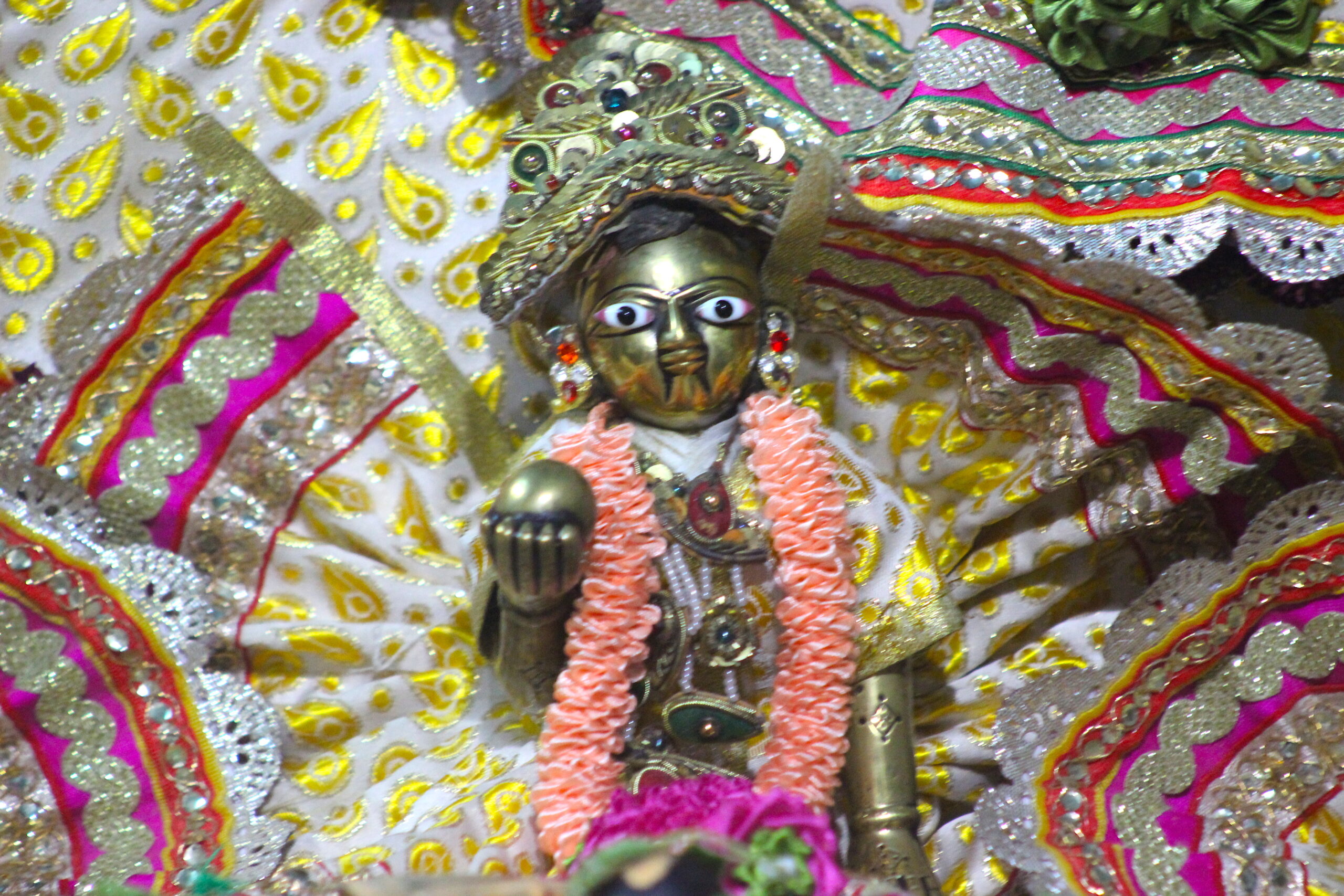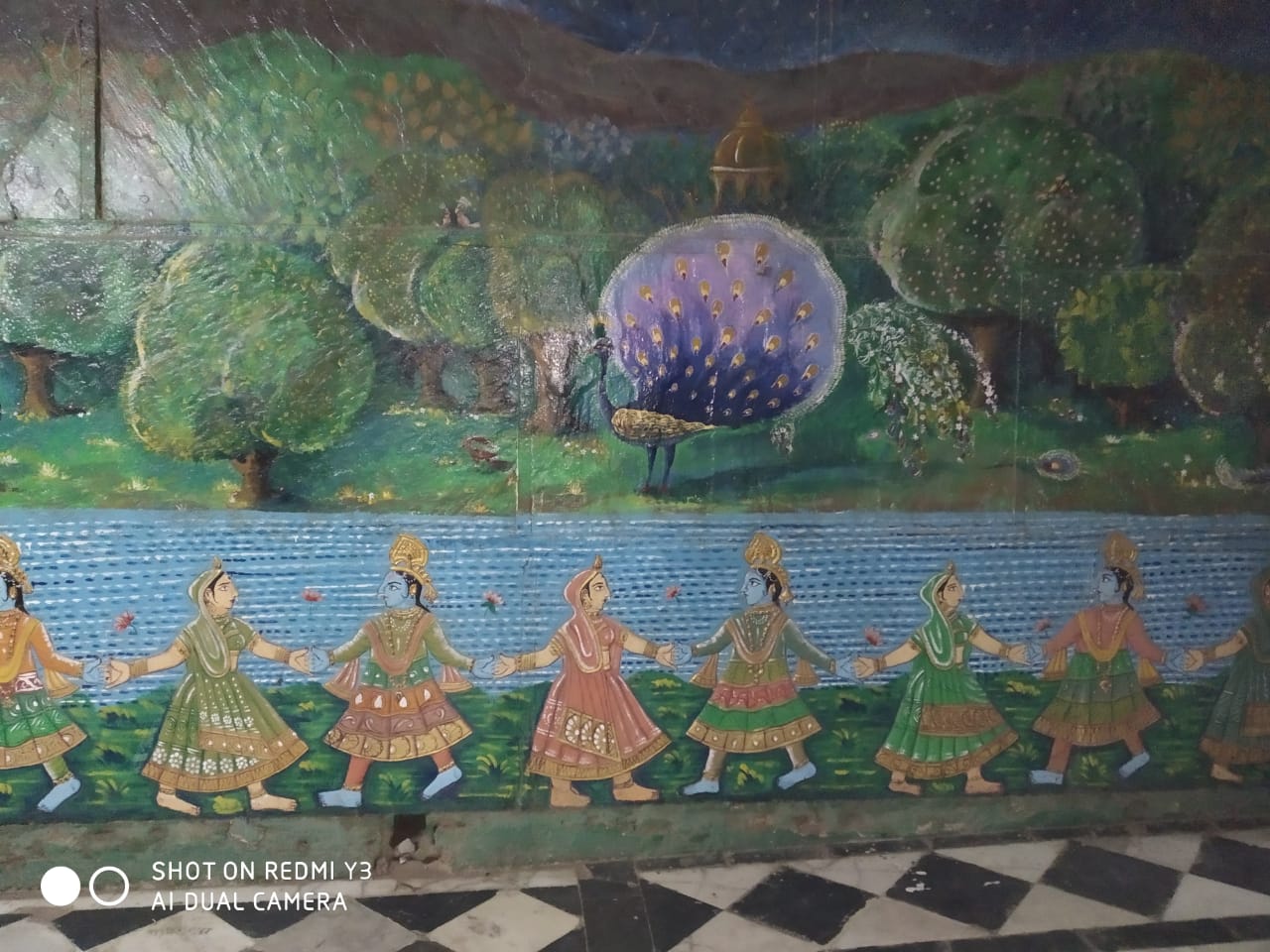The beautiful deity of Baldau worshipped here, is said to have manifested along with Govind Dev and three other vigrahas – Devi Yogamya, Vrinda Devi, and Singhpore Hanuman, – from Gomatila. Acharya Shri Vedgopal Goswami whose ancestors have been in the service of Dauji in an unbroken chain, throws light on this mesmerising account. Following is an English translation of his write-up detailing the temple and deity’s antiquity and significance.
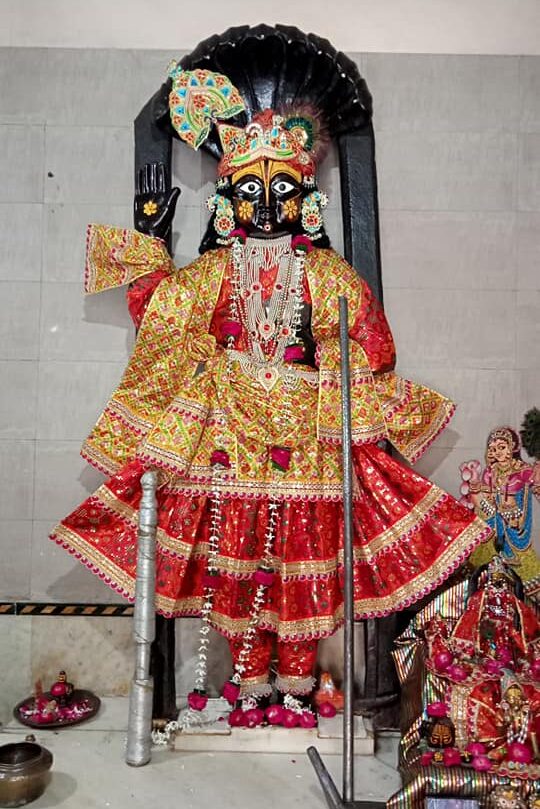
Braj ke Raja Daudayal
स्फुरदमलकिरीटं किंङ्किणीकङ्कणाहे, चलदलक कपोलं कुण्डल श्रीमुखाब्जम्। तुहि न गिरि मनोज्ञं नील मेघामबराढ्यं, हल मुसल विशालं कामपालं समीडे।।
The one with a glowing crown, bedecked with the waist girdle and rings, His curled locks caressing the cheeks, dazzling ear-rings add to the irresistible beauty of His lotus face, He is as majestic as the Himalayas. Adorned with the mesmerising ‘neelambar’ (blue) and sporting the plough and mace, Him, I remember – the supreme, Bhagwan Balbhadra.
Situated on the banks of Yamuna, Shri Dham Vrindavan is home to nearly 5500 temples, where the Saptadevalayas of Gaudiya Sampradaya are considered most ancient, particularly Govind Dev, Gopinath and Madan Mohan ji.
The granthas say that instructed by Shandilya Muni, the great grandson of Shri Krishna, King Bajranabh requested Vishwakarma to make the vigrahas of many gods and goddesses in a span of about 5250 years. One of them was Shri Govind Dev. When the king’s mother (grandmother according to some accounts), saw the image, she at once drew the veil out of modesty because its lotus face (mukharvind) was exactly like that of Shri Krishna.
All these deities of Braj-Vrindavan got buried in the sands of time. In the early 16th century, instructed by Shri Chiatanya Mahaprabhu, Shri Roop Goswami set out on the search for these lost treasures. While looking for Govind Dev, he was directed by Shri Krishna Himself to Gomatila. In Dwapar Yug this place was known as Keshi Teerth. When people started digging at the Gomatila, Govind Dev manifested from the kshetra/shakti peeth along with four other vigrahas – His elder brother – Sheshavatar Balaram, Devi Yogmaya, Vrinda Devi and Singhpore Hanuman.
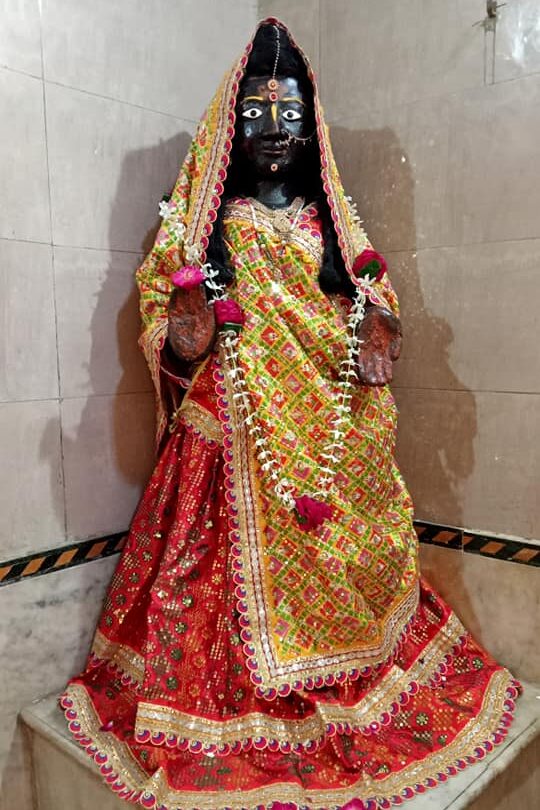
Considering the evidence from Ashwamedh Khand of Garga Samhita, King Bajranabh performed an Ashwamedh Yagnya in Mathura following which he consecrated six vigrahas all over Braj. The sacrifice (yagnya) was similar in grandeur to the one conducted by Maharaj Yuddhishtir in Hastinapur. These deities were Shri Deergh Vishnu and Keshav Dev in Mathura, Govind Dev in Vrindavan, Hari Dev in Govardhan, Gokuleshwar in Gokul, and Baldau instated a yojan away from Gokul. Along with these, another five vigrahas of Bhagwan Balaram are also mentioned.
ततः च मथुरायां च दीर्घविष्णुं च केशवम।
वृन्दावने च गोविंदं हरिदेवं गिरीक्ष्वरे।।
गोकुले गोकुलेशं च गोकुलाद्योजने बलम।
स्थापयामास वज्रस्तु हरेश्च प्रतिमाश्च षट।।
बलस्य प्रतिमाश्चान्याः पञ्च वै व्रजमण्डले।
नृणा शुभाय वज्रस्तु स्थापयामास हर्षितः।।
After the deities had manifested, Roop Goswami’s disciple, Raja Maan Singh of Jaipur constructed a magnificent red sandstone temple for Them at the site. Govind Dev and Dau ji were consecrated there and worshipped next to each other until Braj came into the grip of marauding Mughals in the 18th century. Shri Govind Dev was rushed to Jaipur. He has been residing there since 1734.
Dauji stayed behind. His vigraha was hidden in a kund (sacred pond) near the temple. While most of the kund has been encroached upon today, a chhatri of it can still be seen in Govind Ghera area. It is believed that He remained safe inside the pond until the terror of the Mughals subsided. He didn’t leave Vrindavan.
वृंदावन काटन लागौ भाग गए सब देव।
वृन्दावन ठाड़े रहे यमुना और बलदेव।।
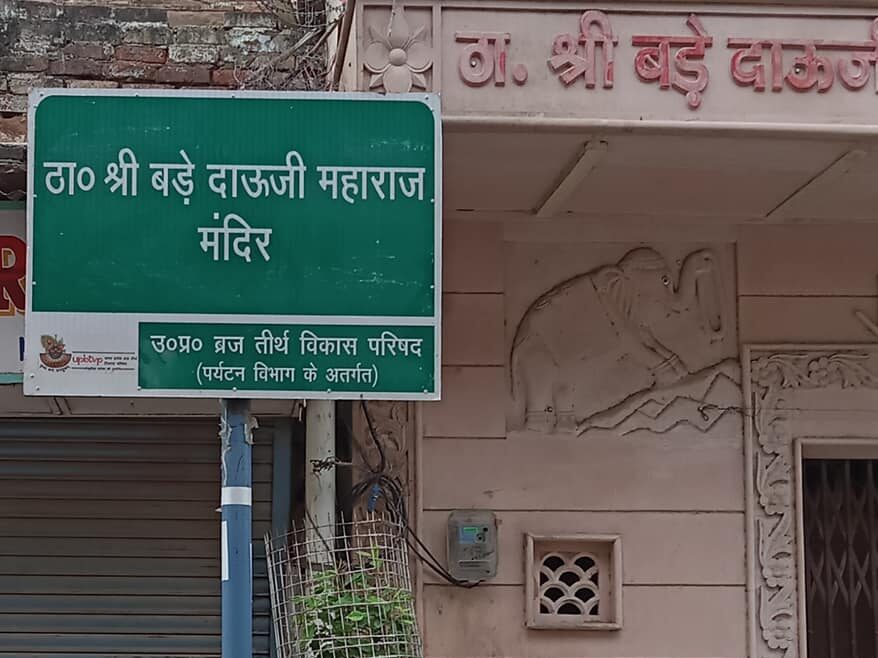
Baldau’s vigraha was later worshipped for a long time at the place where the new temple stands today. He is still present there as ‘Gupt Dauji’.
The daughter of Raja Jai Singh once got a message that Govind Dev ji’s elder brother was left behind in Vrindavan. Determined to bring Him to Jaipur, she left for Vrindavan at once. However, the camels that were supposed to carry the vigraha refused to move an inch. The princess was perplexed. That night Dauji appeared to her in a dream and said that He will not leave Vrindavan.
In samvat 1835, she ordered the constriction of the present temple in anaaj mandi. The princess was by that time the queen of Karoli. She offered the village of ‘sanet’ as daan (charitable offering) to the temple. Bade Dauji has been residing here since that time.
Acharya Shri Vedgopal Goswami claims that his ancestors were the ‘kul purohits’ of Govind Dev Mandir. The seva of Thakur Shri Dauji Maharaj and His temple was entrusted to Shri Govind Gopal Goswami (Parashar Gotra) and it has continued since then in an unbroken chain/tradition.
The vigraha of Dauji at Shri Balbhadra Peeth is the biggest in Braj, hence He is called ‘Bade Dauji’. All festivals are celebrated with great enthusiasm here; however, Paush Khichdi Mahotsav and Bhado’s Baldev Chhat are most important.
